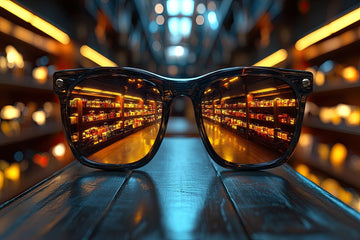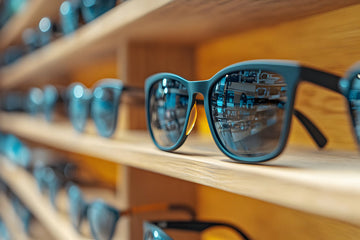- Rain is responsible for 11-percent of vehicle crashes, 11-percent of crash injuries and 8-percent of fatalities.
- Wet pavement is responsible for 18-percent of vehicle crashes, 17-percent of crash injuries and 13-percent of crash fatalities.
What about wearing sunglasses during the day when it's raining?
Experts highlight the many benefits of wearing polarized sunglasses. When light bounces upward and reflects off a surface, it creates glare. The molecules present in polarized lenses help block the horizontal lights that are reflected. Essentially, it doesn't block light, but does block light that reflects off surfaces. This allows people to see through surfaces.
Physicians believe that on bright rainy days, light is reflecting off the pavement, similar to light reflecting off a pool of water. This light then reflects into the eyes, causing glare and making it difficult to see and drive. Polarized lenses do block light, especially light that reflects at an angle. This is what gives drivers a shiny glare that is ultimately responsible for a significant number of traffic accidents.
While wearing sunglasses during rainy daytime driving conditions can be helpful, it does depend on the amount of light outdoors.
Drivers should consider keeping a pair of polarized sunglasses readily available in vehicles. While other types of sunglasses are helpful for sunny conditions, polarized lenses are optimal for poor weather.
Olympic Eyewear features several wholesale sunglasses, including polarized sunglasses. Designed to help reduce glare on water, roads and snow, these types of sunglasses were initially invented for fishing, allowing anglers to see into the water while avoiding unsightly water glare. Polarized lenses are available in a number of designer sunglasses, including DG sunglasses, aviator styles and Choppers sunglasses.
Don't become a government statistic! Stay safe while driving and encourage consumers to purchase polarized lenses.




